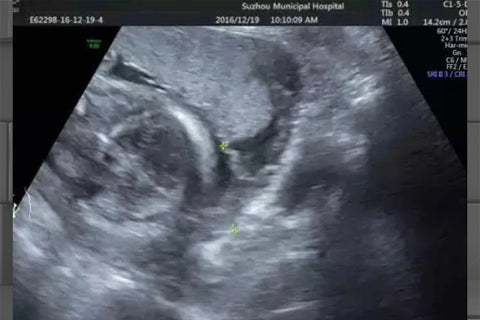A few suggestions:
- It is easy to miss the part of the placenta close to the internal cervix during inspection because the placenta and the uterus have a wide attachment surface, so it needs to be carefully observed.
- Due to the occlusion of the fetal head and other structures, it is not conducive to the display of placenta previa. It is necessary to use the probe to observe from multiple angles.
- The position of the placenta must be carefully observed during the third-level screening to find the placenta previa state as early as possible.
- Before each check-up, please check the previous check-up records. Be wary of pregnant women whose doctors have indicated that there may be placenta previa, and see if the placenta is low!
- If pregnant women in emergency department have bleeding, they should think of the four words placenta previa. Thinking of it is the prerequisite for a successful diagnosis. Focus on whether it is accompanied by placenta previa or placental abruption.
- When the training doctors or doctors of Guipei operate on the computer, the teaching teacher must check it well. In the event of a medical dispute, the teaching teacher who signed the report is the first responsible person!
- It is not possible to transfer all the responsibilities to the third-level screening doctors. The position of the placenta is the basic content to be carefully observed in any gestational week!
Attachment: Pay attention to the international standard: the lower edge of the placenta is more than 20mm from the internal cervical os, which is normal. In actual work, the domestic play is too loose.
The problem of placenta previa seems simple. In fact, there is no uniform standard in China, which is very messy. Some people regard <40mm and 30mm as low-level standards. I studied relevant domestic and foreign literature, and also consulted top experts on prenatal ultrasound in the United States and China, and summarized everyone's opinions as follows:
- Diagnosis of not having placenta previa before 16 weeks of pregnancy
- From 16 weeks to 31 weeks of pregnancy (especially before 28 weeks), it is more appropriate to type "...status", so that it reflects the spirit of labeling in English

- The lower edge of the placenta is more than 20mm from the cervical os, normal
- The lower edge of the placenta is less than 20mm from the internal cervical os, and it is in a low state. It is recommended to review at 32 weeks of pregnancy.
- The lower edge of the placenta covers the internal cervix, pre-preposition, it is recommended to review at 32 weeks of pregnancy
- Re-examination at 32 weeks of pregnancy, if the lower edge of the placenta is still less than 20mm from the internal cervical ostium or covers the internal cervix, the diagnosis of low placenta or placenta previa can be confirmed
- Because it is difficult to distinguish between marginal and partial placenta previa in actual work, it is not used now. It is now recommended to write only three diagnoses: normal, low and placenta previa.
6.Transcavity ultrasound is the most accurate.
So, what is the distance from the lower edge of the blood sinusoid to the internal cervical opening? Or to measure the distance between the placenta and the internal cervix? I think it is the former! To be on the safe side, it is more reliable to measure from blood sinusoids. The picture is the wrong method, please discuss with colleagues.


